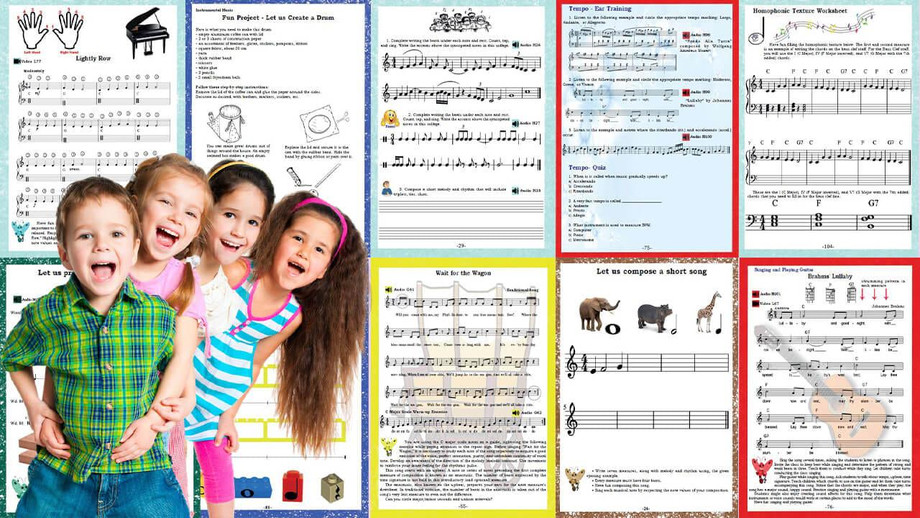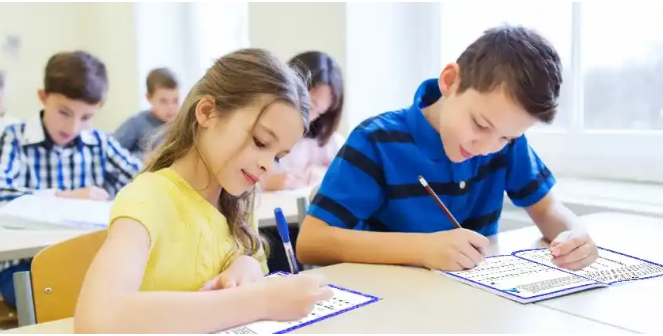What Must Music Teachers Include in Their Curriculum?
Music teachers should create a curriculum that mixes theory, practical skills, and creativity. To establish a solid foundation in music theory, teaching rhythm, melody, harmony, and notation are crucial components. Participating in group work, vocal exercises, and instrument playing fosters students' practical skills and teamwork. Opportunities for performance, improvisation, and composition can all foster creativity. The curriculum should be adaptive, adapting to diverse learning styles and skills, while cultivating a passion for music and enhancing students' general comprehension of the art form.
Overview of Books on Elementary Music Education and Homeschool Music Instruction
A flexible and individualized method of teaching music at home is offered via homeschool music lessons. Parents can help their children study in an organized manner by providing them with the appropriate elementary music education books. The fundamentals of rhythm, melody, and music theory are usually covered in these books, which makes it simpler for homeschoolers to take a progressive approach to music education.
Formulating a Homeschool Elementary Music Curriculum
In order to assurance that their children receive a thorough musical education, paternities must design an elementary music curriculum. A diversity of subjects like vocal exercises, instrument practice, history, and music theory must be included in this curriculum. Homeschoolers gain from having a well-organized curriculum that offers depth and flexibility and fits their learning style. A well-rounded homeschool music curriculum should emphasize both academic understanding and practical application, including chances for creation and performance that support a child's complete musical development.
Including Other Subjects in the General Music Curriculum
A general music curriculum is meant to provide a thorough overview of music ideas and is easily adaptable to fit into various topic areas. For instance, understanding the cultural elements of music can help students learn about history, and the rhythm and patterns found in music can help students learn mathematics. Students may grasp the significance of music in many facets of life when it is taught alongside other courses, which promotes a multidisciplinary approach. In addition to promoting creativity and critical thinking, a general curriculum is a beneficial supplement to basic education.
Early Skill Development in Kindergarten Music Curriculum
A child's future musical journey is laid with a well-structured kindergarten music curriculum. Early musical experiences promote emotional and creative expression in addition to aiding in the development of motor and cognitive abilities. Music Curriculum for Kindergarten should incorporate age-appropriate movement activities, short songs, and rhythmic drills. Including singing, dancing, and diverse music listening can help young children become more self-assured and enjoy learning music.
Curriculum for Music Teachers and Subject-Based Instruction
Vocal technique, instrument instruction, and music theory should all be covered in a thorough music teacher curriculum. Moreover, integrating music education into the curriculum helps improve students' understanding of arithmetic, social studies, and language. Teachers can utilize music to understand other cultures through music history, show numerical patterns, and enhance language through song lyrics. This method enhances the entire educational experience in addition to deepening understanding of music.
Structured Learning using Elementary Music Textbooks
For younger students, structured lessons are provided by elementary music textbooks, which are useful resources. These music textbooks usually include songs, exercises, and systematic instructions that gradually cover music theory and practice. These materials offer homeschoolers a strong foundation and guarantee that their kids advance steadily in their music instruction. To provide a well-rounded learning experience, textbooks can be utilized in conjunction with hands-on activities like singing or playing an instrument.
Curriculum for Music in First and Second grade music curriculum: Developing Skills
First grade music curriculum should start with the fundamentals and progress to increasingly intricate rhythms and melodies as students go through their musical journey. Rudimentary instruments, rudimentary notation, and group singing can all be a part of this curriculum. As the program progresses, more complex elements are included, like learning to read music, comprehending scales, and performing increasingly difficult instrumental works. Both curricula ought to promote development while maintaining an enjoyable and captivating learning environment for younger students.


Comments
Post a Comment